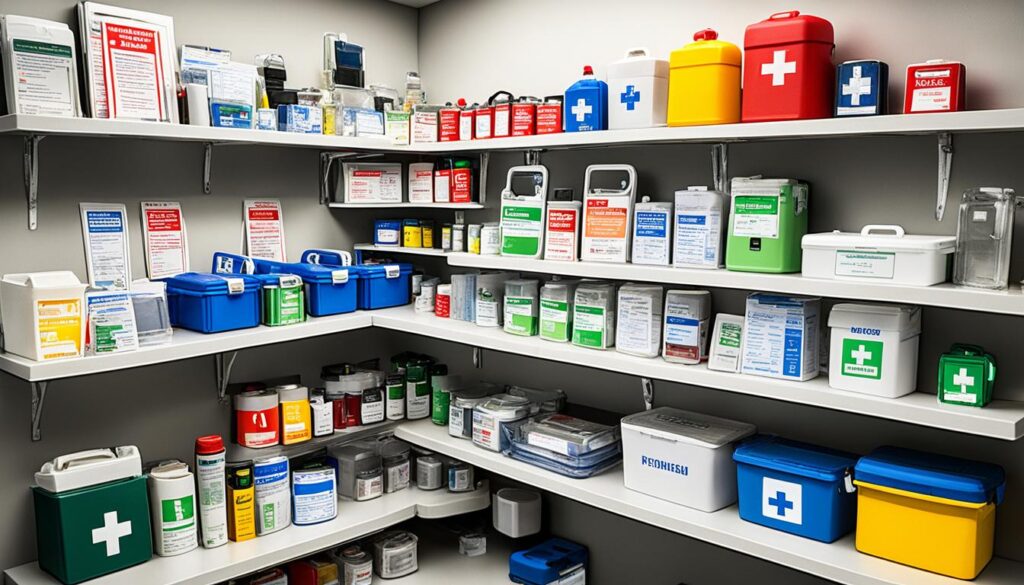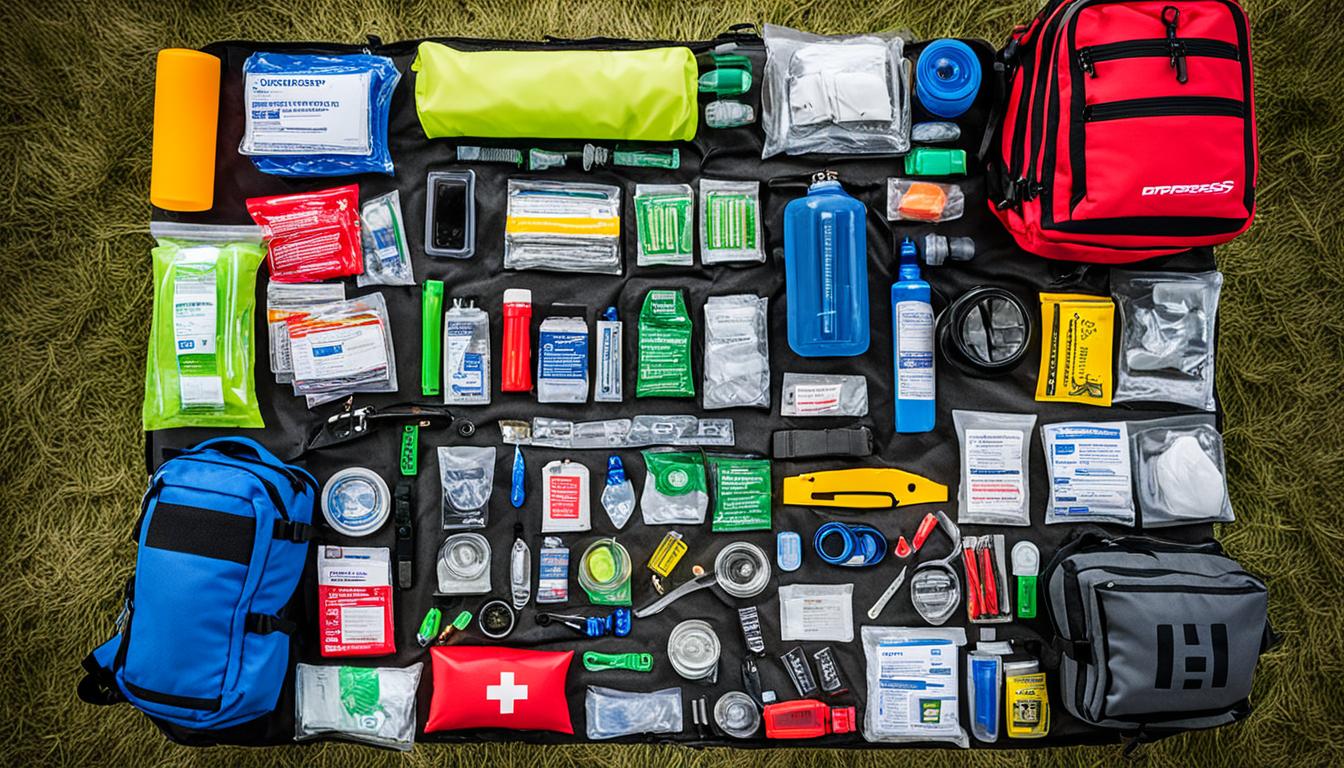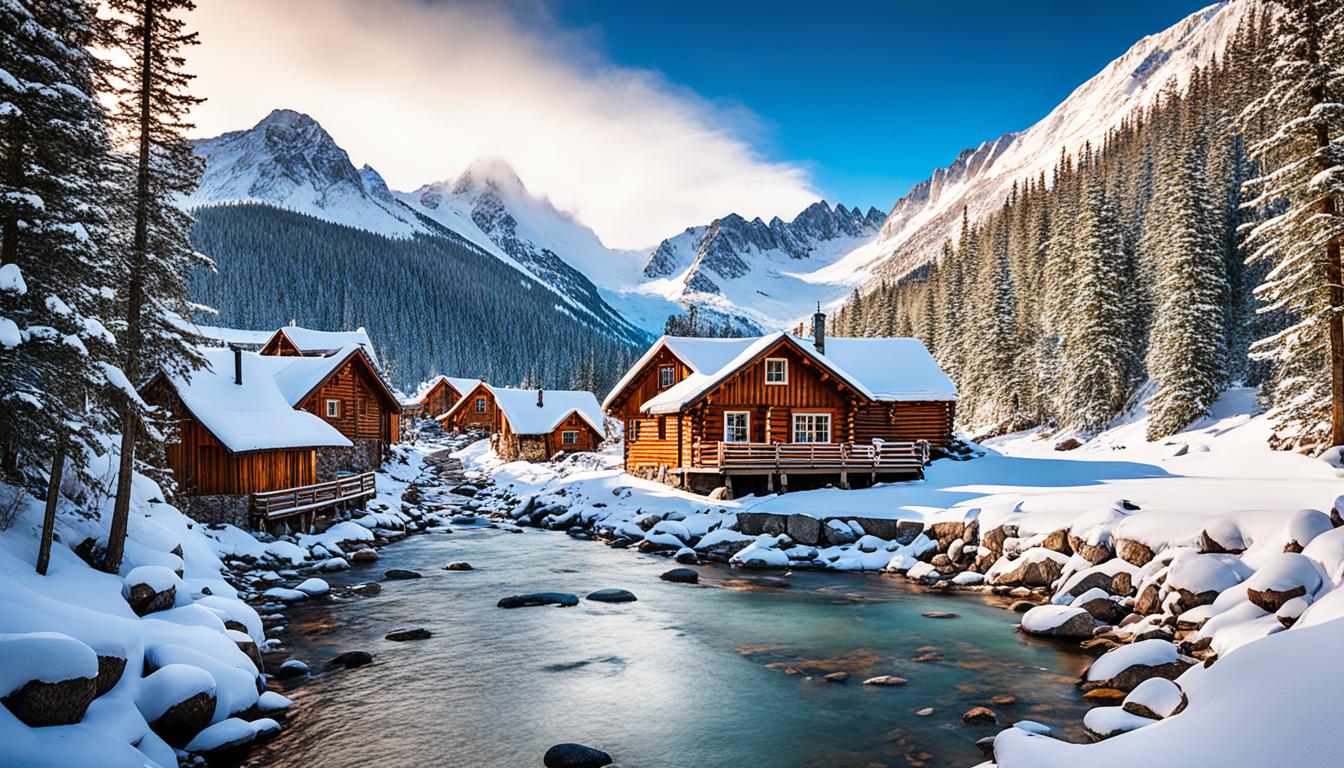Being prepared for emergencies is vital. It ensures the safety of you and your loved ones. It’s crucial to have a plan for any situation. This guide will offer expert tips on emergency planning and readiness. These include the supplies you need and how to get them.
Key Takeaways:
- Preparing for emergency situations is essential for the safety and well-being of your family.
- Create an emergency preparedness kit that includes essential supplies.
- Develop an emergency plan for your household, including communication and evacuation strategies.
- Familiarize yourself with local emergency resources and preparedness steps.
- Regularly review and update your emergency supplies kit and emergency plan.
Creating Your Emergency Preparedness Kit
One key to being prepared is having an emergency supplies kit ready. Make sure it holds necessary things like:
- Water
- Non-perishable food
- A battery-powered or hand crank radio
- A flashlight
- A first aid kit
- Extra batteries
- A whistle
- Dust masks
- Plastic sheeting
- Duct tape
- Moist towelettes
- Garbage bags
- A wrench or pliers
- A manual can opener
- Local maps
- A cell phone with chargers
- And extra emergency supplies for special needs
Keep your kit ready by updating it regularly. Make sure everything in it works and isn’t past its use-by date. An updated emergency kit helps you react better in tough situations. It also keeps you and your family safe.
Developing an Emergency Plan
Having an emergency supplies kit is good, but a plan is just as important. A well-thought-out emergency plan keeps your family safe. Include these key elements:
- Receiving Emergency Alerts and Warnings: Figure out how you’ll get emergency alerts. Sign up for local emergency notifications. Make sure you have a way to stay informed.
- Identifying a Shelter Plan: Find out about shelters near you. Note their locations. Know how to get to them if there’s an emergency.
- Establishing an Evacuation Route: Plan the best ways to leave your home or neighborhood. Find safe paths and alternative routes. This is important if the main way is blocked.
- Creating a Family/Household Communication Plan: Make a clear communication plan for your family. Everyone should know how to get in touch. Pick someone who doesn’t live with you as a contact. Also, pick places to meet if you get separated.
- Considering Specific Needs: Think about the special needs of your family. This includes the ages of members, where you usually go, and what you eat. Also, think about any disabilities, languages, or pets.
- Regularly Updating Your Emergency Preparedness Kit: Keep your emergency kit up to date. Check it often to make sure nothing’s expired. Replace old items and fill it back up when you use things.
Doing these steps and focusing on what your family needs prepares you for emergencies. Don’t forget to practice your plan and review it. This makes sure everyone remembers what to do.
Stay Ready, Stay Safe
An emergency plan is crucial for your safety. By making a detailed plan now, you’re preparing for any tough times. This guarantees the safety of you and those you care about.
| Benefits of Developing an Emergency Plan | Why it Matters |
|---|---|
| Ensures everyone knows what to do in an emergency | Minimizes confusion and panic |
| Helps identify and meet specific needs within the household | Improves the effectiveness of response and support |
| Allows for quick communication and coordination | Facilitates faster, more efficient decision-making |
| Increases overall preparedness level | Reduces vulnerability and enhances resilience |

Knowing Your Local Emergency Resources
Get to know the emergencies that might happen where you live. Check out places like emergency resource libraries for info. You’ll learn what to do before, during, and after emergencies like hurricanes, wildfires, or earthquakes.

Being prepared is key when it comes to emergencies. Use your area’s emergency resource library to find info made just for your community. They offer guides, checklists, and steps for handling different emergency types.
It doesn’t matter if you’ve lived there a long time or just moved in. Knowing your local emergency resources is crucial. It helps you react fast and keep yourself and your family safe. These resources list things like how to contact local emergency services, find evacuation routes, and locate shelters.
| Benefits of Local Emergency Resources | Examples |
|---|---|
| Informational Guides: Access detailed guides on emergency preparedness specific to your area | Emergency Preparedness Guide for [Your City] |
| Checklists and Instructions: Get step-by-step instructions on what to do before, during, and after an emergency | Hurricane Preparedness Checklist |
| Local Contacts: Find contact information for local emergency services and agencies | [Your City] Emergency Services Directory |
| Evacuation Routes: Learn about the designated evacuation routes in your area | [Your County] Evacuation Route Map |
| Emergency Shelters: Find out where emergency shelters are located and what services they provide | Emergency Shelter Directory |
Visit your local emergency resource library. It will prepare you for any tough situation. Keep checking for updates or new info regularly.
Stay informed, be prepared, and know you can handle emergencies with the right resources.
Conclusion
Getting ready for emergencies is not something you do just once. It’s about always being prepared to protect yourself and your family. This guide has tips that will help you get ready for anything.
Keep checking and fixing your emergency supplies and plans. Know what emergency help is available where you live. With the right prep, you can rest easy, ready for whatever comes.
Be safe always.
FAQ
Why is emergency preparedness important?
Emergency preparedness is crucial for keeping you and your family safe when trouble comes. It helps you react well and lessen emergency impacts.
What should I include in my emergency supplies kit?
Your kit should have water, food, a radio, flashlight, and a first aid kit. Don’t forget extra batteries, a whistle, and some tools. Include local maps, chargers, and more based on what your family needs.
How often should I update my emergency supplies kit?
Keep your kit fresh by checking it often. Make sure everything works and isn’t out of date. Add or change things as your needs evolve.
What should be included in my emergency plan?
Your emergency plan must cover how you get alerts, where you go for shelter, and your evacuation route. Make sure everyone knows how to communicate. Update your kit regularly and consider every family member’s special needs.
How can I familiarize myself with local emergencies?
Learn about local emergencies using emergency libraries. They offer tips for preparing, actions during and after emergencies.
Why is it important to regularly review and update my emergency plan?
Regular checks on your emergency plan keep it useful and timely. As your situation or needs change, updating your plan helps you stay ready.




